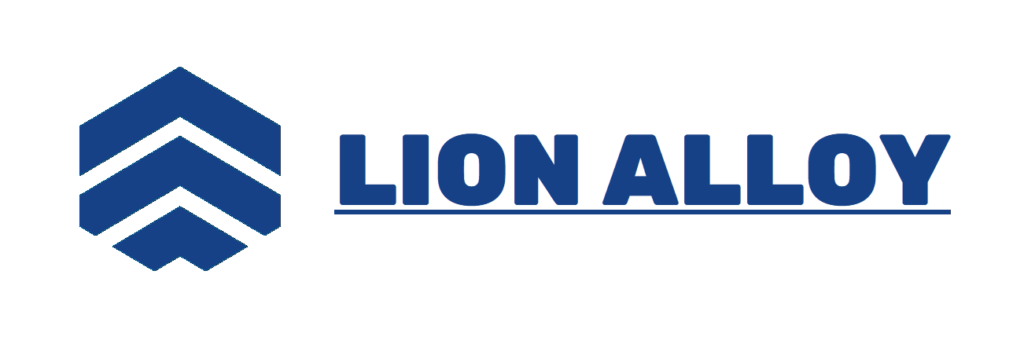介紹
Nimonic 80a是一種基於鎳的超合金,專為高溫應用而設計,尤其是在航空航天,燃氣輪機發動機和工業過程中。這種合金的機械性能,抗氧化和腐蝕性以及在升高溫度下的特殊強度的獨特組合使其成為必須在極端條件下可靠執行的組件的首選選擇。本文將探討Nimonic 80A的特定屬性,該屬性使其在高溫應用中無與倫比,詳細說明其屬性,用途,優勢以及其製造過程中所涉及的過程。
1。了解命名80a
1.1組成和特性
Nimonic 80a主要由鎳組成,並帶有鉻和其他合金元素,以提高其在高溫下的性能。它的組成有助於其顯著的機械和熱性能。
表1:Nimonic 80a的化學組成
| 元素 | 百分比 (%) | 功能 |
|---|---|---|
| 鎳 | 46.0 | 鹼金屬提供延展性和強度 |
| 鉻 | 20.0 | 增強氧化抗性 |
| 鐵 | 5.0 | 提供額外的力量 |
| 鉬 | 1.0 | 增加高溫強度 |
| 鈷 | 3.0 | 改善蠕變抗性 |
| 鈦 | 1.0 | 提供強度並穩定結構 |
| 鋁 | 0.5 | 抗氧化抗性 |
| 碳 | 0.05 | 改善硬度和整體力量 |
| 其他的 | 平衡 | 包括錳,矽,磷,硫 |
1.2關鍵屬性
Nimonic 80a的特徵是多種對高溫應用至關重要的特性:
1.2.1機械性能
Nimonic 80a即使在升高的溫度下也具有高屈服強度和拉伸強度。
表2:Nimonic 80a的機械性能
| 財產 | 價值 |
|---|---|
| 屈服強度(MPa) | 600 |
| 極限拉伸強度(MPa) | 860 |
| 伸長率(%) | 30 |
| 硬度(HB) | 200 |
| 彈性模量(GPA) | 200 |
1.2.2高溫穩定性
Nimonic 80a在高溫下保持出色的穩定性,使其非常適合在燃氣輪機和其他高熱環境中應用。
表3:高溫強度保留
| 溫度(°C) | 屈服強度(MPa) | 極限拉伸強度(MPa) |
|---|---|---|
| 600 | 550 | 800 |
| 700 | 500 | 750 |
| 800 | 450 | 700 |
| 900 | 400 | 650 |
2。在高溫環境中使用Nimonic 80a的應用
由於其獨特的特性,Nimonic 80a用於多個行業的各種高溫應用。
2.1航空業
航空航天部門在很大程度上依賴於發動機組件,渦輪刀片和燃燒室的Nimonic 80A。
表4:航空航天申請
| 成分 | 應用 |
|---|---|
| 渦輪刀片 | 高壓力,高溫區域 |
| 燃燒室 | 氣體遏制 |
| 發動機外殼 | 結構完整性 |
2.2發電
Nimonic 80a在燃氣輪機和蒸汽輪機中是不可或缺的,在高性能和效率上至關重要。
表5:發電應用
| 成分 | 應用 |
|---|---|
| 瓦斯渦輪機 | 能源產生 |
| 汽輪機 | 增強熱效率 |
| 熱交換器 | 發電廠的傳熱 |
2.3工業應用
合金還發現在惡劣條件下運行的工業應用中,例如化學加工設備和爐固定裝置。
表6:工業應用
| 成分 | 應用 |
|---|---|
| 爐裝置 | 暴露於高溫的成分 |
| 化學加工設備 | 對腐蝕環境的抵抗力 |
| 油氣設備 | 在極端條件下的耐用性 |
3。在高溫應用中使用nimonic 80a的優點
使用Nimonic 80a進行高溫應用,比其他材料具有多個優點。
3.1優越的強度和耐用性
Nimonic 80a在極端條件下保持其機械完整性,以確保持久的組件性能。
3.2抗氧化和腐蝕性
合金的高鉻含量具有極好的抗氧化和腐蝕性,從而延長了惡劣環境中組件的壽命。
表7:氧化阻力的比較
| 合金 | 氧化率(mm/年) | 性能水平 |
|---|---|---|
| Nimonic 80a | 0.25 | 出色的 |
| 鉻鎳鐵合金625 | 0.30 | 好的 |
| 司太立合金6 | 0.50 | 緩和 |
3.3製造靈活性
Nimonic 80A可以使用各種方法輕鬆製造,包括鍛造,加工和焊接,使製造商可以根據特定應用程序量身定制組件。
3.4高蠕變阻力
Nimonic 80a的組成使其具有極佳的抗蠕變性,這對於耐受長期暴露於高溫和壓力的部分至關重要。
表8:蠕變阻力比較
| 合金 | 蠕變率(mm/1000小時) | 性能水平 |
|---|---|---|
| Nimonic 80a | 0.001 | 出色的 |
| 鉻鎳鐵合金718 | 0.002 | 好的 |
| 黃蜂 | 0.005 | 公平的 |
4。命名80A組件的製造過程
Nimonic 80a組件的製造需要專門的製造工藝來有效利用其獨特的特性。
4.1鍛造
鍛造nimonic 80a通過晶粒細化增強其機械性能。該過程涉及將材料加熱到其鍛造溫度併機械變形以達到所需的形狀。
表9:Nimonic 80a的鍛造參數
| 範圍 | 建議的價值 |
|---|---|
| 鍛造溫度(°C) | 900 - 1200 |
| 變形比 | 3:1 |
| 冷卻速率 | 受控 |
4.2加工
加工nimonic 80a需要特定的工具和技術,以克服其韌性和耐磨特性所帶來的挑戰。碳化物工具和適當的切割速度至關重要。
表10:Nimonic 80A的加工參數
| 範圍 | 建議的價值 |
|---|---|
| 切割速度(m/min) | 30-50 |
| 飼料率(mm/rev) | 0.1-0.3 |
| 切割深度(mm) | 1-5 |
4.3焊接
焊接二摩型80A需要專門的技術和填充材料,以保持焊縫的完整性和合金的性能。
表11:焊接過程
| 過程 | 描述 |
|---|---|
| 鎢極氣體保護焊 (GTAW) | 高精度和控制 |
| 氣金屬電弧焊接(GMAW) | 更快的過程,但控制範圍更少 |
| 等離子體電弧焊接 | 適用於薄壁部分 |
5。結論
Nimonic 80a鍛造零件由於其出色的機械性能,對腐蝕和氧化的耐藥性以及製造過程中的柔韌性而無與倫比的高溫應用。它在航空航天,發電和工業部門的穩健性能突出了這種合金在極端環境中的多功能性和可靠性。通過利用Nimonic 80A,製造商可以在其組件中實現高效率和耐用性,從而確保在苛刻的應用中的長期運營成功。
材料科學和工程過程中持續的發展將繼續增強Nimonic 80a的能力,從而進一步鞏固其作為高溫應用的領先選擇的位置。隨著行業的發展和需求更高的性能材料,Nimonic 80A不僅因為其當前功能而脫穎而出,而且由於其未來的適應和脫穎而出而脫穎而出。


